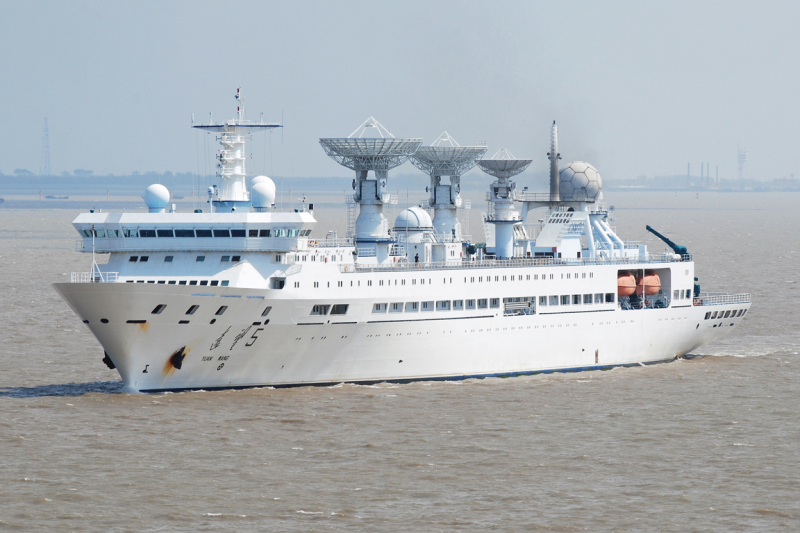North Korea's hidden submarine threat is another worry as regime warns it's 'ready' for war
A nuclear attack threat from a North Korean submarine is one of the nightmare scenarios facing Japan and South Korea.
The chilling thought of
North Korea's fully submersible submarines firing a nuclear ballistic missile isn't as far-fetched as some might think. Pyongyang has made major advances in weapons in recent years and shown a willingness to use its submarines for offensive military actions.
Indeed, last month was the seventh anniversary of the sinking of
South Korea's Cheonan navy ship by a North Korean submarine torpedo attack. That aggression killed 46 sailors and wasn't the first time the reclusive North had made incursions into South Korean waters.
The submarine threat adds to growing fears in the region as North Korean leader
Kim Jong Un's nuclear weapons ambitions show no signs of slowing. It also comes as a U.S. carrier strike force led by the USS Carl Vinson sailed toward the Korean Peninsula.
Not surprisingly, North Korea decried the deployment of the American carrier task force to the volatile region. "If the U.S. dares opt for a military action … the DPRK is ready to react to any mode of war desired by the U.S.," the state-run
Korean Central News Agency said Monday. DPRK is short for the North's formal name, Democratic People's Republic of Korea.
Experts believe North Korea's navy has around 70 submarines in its fleet, although only a handful today are believed to be capable of firing submarine-launched ballistic missiles or so-called SLBMs. What's more, defense analysts believe Pyongyang has the capability today of building a nuclear warhead small enough to arm a submarine missile.
Last August, North Korean media showed off video of a so-called KN-11 submarine missile being launched from eastern coastal waters. Images of the North Korean dictator pointing to the missile launch were shown on the state television network.
The submarine-launched missile flew about 310 miles toward
Japan. The test set a new distance record for Pyongyang's SLBM program, and experts suggest the ballistic missile has the capability to travel more than 600 miles.
"The problem with the SLBM is that it exposes South Korea's flanks to attack," said Bruce Klingner, an Asia and national security specialist at the Heritage Foundation, a Washington-based conservative think tank.
Klingner, a former CIA deputy division chief for Korea, explained that the THAAD anti-missile system deployed last month by the U.S. in South Korea is focused on identifying missile threats from the North. As a result, a submarine missile from the North Korean navy could be launched behind radar and evade defense systems.
Similarly, missiles fired by North Korean submarines off the east coast of Japan might be able to dodge detection from Japan's Patriot anti-missile system by launching from behind radar.
Joint U.S.-South Korea military exercises this year included drills on destroying the North's submarines.
Klingner said some people have been dismissive of the Pyongyang submarine threat by maintaining that the North's vessels are "old and noisy." The noise comes from the submarine's diesel-powered engines.
Yet in 2015 South Korean defense officials reported a sudden disappearance of around 50 of the North's submarines.
"We didn't know where they were at the time," said Klingner. "One would hope that we would keep very close tabs on those that could launch the SLBM."
Advances in North Korea's land-based weapons development have been helped by its submarine program.
As an example, Pyongyang in February showed off a
new medium- to long-range ballistic missile that is capable of carrying a nuclear warhead and uses solid-fuel technology. The land-based ballistic missile is believed to use the same technology of the KN-11 solid-fuel submarine missiles.
Solid fuel offers significant advantages over liquid-fuel rockets because it makes the missile easier to hide, requires less support and allows for faster launches.
"All of that is very worrisome because that may very well have a nuclear weapon someday," said Klingner.
He said the North Korea's liquid propellant ballistic missiles, such as the so-called No-Dong medium-range, road-mobile system already is believed to be nuclear capable "so that means Japan and South Korea are under nuclear threat today."
The secretive regime also is working to build an intercontinental ballistic missile that can reach North America. In January,
NBC News reported that Pyongyang could test-fire the ICBM "at any time, at any place," quoting a senior regime official in North Korea.
The U.S. has a ground-based interceptor missile and radar system designed to detect and kill ICBM missiles. Thirty-six such interceptors are stationed in Alaska and California, and the military expects to have a total of 44 in place by the end of this year, according to a defense official.
"Their conventional forces maybe not very capable at the moment, but they have a lot of weapons of mass destruction," said Nicholas Eberstadt, a researcher at the American Enterprise Institute, a conservative think tank based in Washington. "Even if they would end up losing a war, … they could kill an awful lot of people on our side."
President Donald Trump and
Chinese President Xi Jinping held talks last week and discussed North Korea. Trump tweeted about the meeting Tuesday and also had words for Pyongyang.


